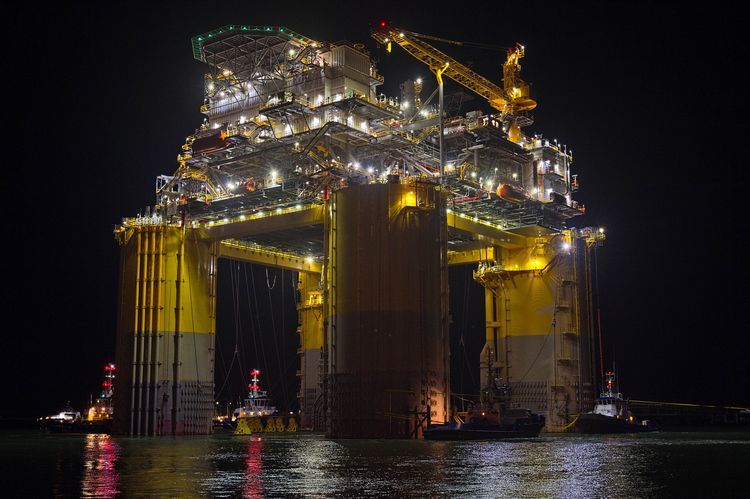
Price curve? Check. Technical markers? Check. The oil market just got bullish and that’s left OPEC with little room for maneuver when it meets in Vienna next week.
After the energy ministers of Saudi Arabia and Russia talked up the potential for the Organization of Petroleum Exporting Countries and other nations to extend output cuts into early 2018, the crude market took off. OPEC’s preferred market structure returned, with nearer contracts at a premium further along the curve, with Brent and West Texas Intermediate crude rising above their key 200-day moving averages in intraday trading.
Ole Hansen, head of commodities strategy at Saxo Bank A/S in Copenhagen, said: “Now they have to deliver
“You could argue that an awful lot of positive news has been priced in and they need to deliver for that to be sustainable.”
A coalition of OPEC nations and allies including Russia last year agreed to cut output by about 1.8 million barrels a day, starting in January. After the move initially boosted prices, concerns that it wouldn’t be sufficient to counter-act surging U.S. production pushed WTI below $44 a barrel. Producer nations, acknowledging they won’t achieve their target of returning global inventories to their five-year average by the time the original deal expires at the end of June, look likely to agree an extension at a meeting in Vienna on May 25.
As traders in Europe hit their desks on Monday morning, Brent crude jumped above its 200-day moving average. Early in May, a break below that marker sparked a sell-off with prices at their lowest since the last OPEC meeting at the end of November. The global benchmark also broke on Monday above another key technical marker, the 50-day moving average, for the first time since April 19.
Tamas Varga, an analyst at brokerage PVM Oil Associates Ltd. in London said: “If you were short you cover, if you were flat you start acquiring length and if you were long you add to or keep those positions.
“If there’s going to be a rollover longer than the second half of this year, I think the market will strengthen even after the meeting.”
Renewed bullishness in the crude market was also reflected in its structure. Brent for December delivery this year is now trading at a premium to December 2018, a structure known as backwardation. The spread, which normally moves a few cents in a day, jumped by as much as 55 cents on Monday, having strengthened in each of the previous three sessions.
The nearest crude spreads are also at their least bearish since the end of March, a sign that traders of physical oil barrels, as well as speculators, see improved fundamentals in the market, Varga said. Brent for July delivery was 18 cents cheaper than Brent for August at 12:23pm in London on Monday. A month ago, the July contract’s discount was more than twice that. While an OPEC extension would boost the hopes of a market re-balancing, onlookers are now asking whether the outcome of next week’s meeting is already priced in.
Michael Poulsen, oil risk manager at Global Risk Management Ltd. in Middelfart, Denmark, said: “It will be interesting to see whether you get a fait-accompli when you get to the 25th, or if they do something completely unexpected.
“They’re writing some pretty big checks that they’re going to have to deliver on next week, otherwise there’ll be a big boomerang effect.”
